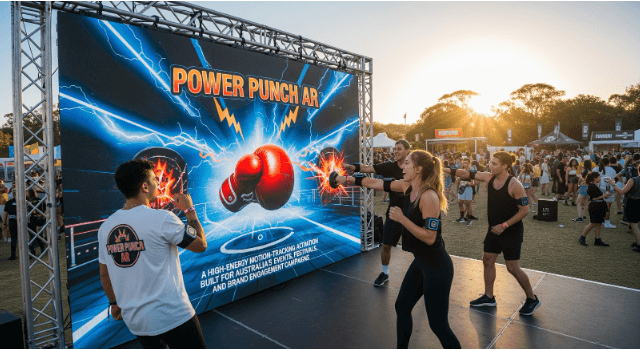What You Need to Bring Your Product to Life Using Augmented Reality
Mar 27, 2025
Image sourced from Google
In today's digital landscape, Augmented Reality (AR) is transforming the way brands showcase their products. Whether you’re launching a new product, enhancing customer engagement, or offering an immersive shopping experience in Australia, AR can help bring your product to life. But what does it take to implement AR successfully? Here’s a step-by-step guide to everything you need to get started.
Define Your AR Use Case
Before diving into AR development, identify your goals. Are you looking to create an interactive 3D product visualization? Do you want to offer virtual try-ons, AR-guided instructions, or an immersive brand storytelling experience? Clearly defining your use case will shape the technology and development approach.
High-Quality 3D Models
To create an immersive AR experience, high-quality 3D models of your product are essential. These models should be:
Optimized for AR with lightweight file formats like GLB or USDZ.
Photorealistic and detailed to enhance customer engagement.
Designed with accurate dimensions to maintain real-world proportions.
AR Development Platform
Choosing the right AR development platform is crucial for seamless integration. Some popular AR platforms include:
WebAR: No app download required, works through mobile browsers.
ARKit (iOS) & ARCore (Android): Ideal for mobile-based AR applications.
Unity & Unreal Engine: Best for high-end AR experiences in gaming and enterprise applications.
Snapchat Lens Studio & Instagram Spark AR: Ideal for social media-based AR marketing campaigns.
Hardware Compatibility
Your AR experience should be optimized for a variety of devices, including:
Smartphones & tablets (iOS & Android)
AR smart glasses (HoloLens, Magic Leap, etc.)
Web-based AR for universal access across devices
Interactive Features
Engagement is key to a successful AR experience. Consider integrating:
Gesture-based controls: Allow users to rotate, zoom, or interact with products.
Voice commands: Hands-free interaction with AR elements.
AI-driven personalization: Tailor AR experiences based on user preferences.
Real-time animations: Showcase product features dynamically.
Seamless Integration with E-Commerce & Marketing
Your AR experience should be seamlessly integrated into your existing digital ecosystem. Consider:
Embedding AR product views on your website.
Connecting AR with online checkout processes.
Using AR filters for social media marketing.
Adding QR codes to packaging for instant AR access.
User Experience & Accessibility
A user-friendly interface ensures a smooth AR experience. Optimize for:
Fast loading speeds to prevent drop-offs.
Intuitive controls for easy interaction.
Cross-device compatibility for a wider reach.
ADA compliance for accessibility.
Testing & Optimization
Before launching, rigorous testing ensures a seamless user experience. Conduct:
Device compatibility testing across iOS, Android, and web.
Performance testing for lag-free interactions.
User feedback sessions to refine features.
Launch & Marketing Strategy
Once your AR experience is ready, promote it effectively:
Leverage social media ads to drive engagement.
Use influencer collaborations to showcase AR in real-world scenarios.
Incorporate email marketing to introduce AR features to customers.
Create tutorial videos for easy adoption.





